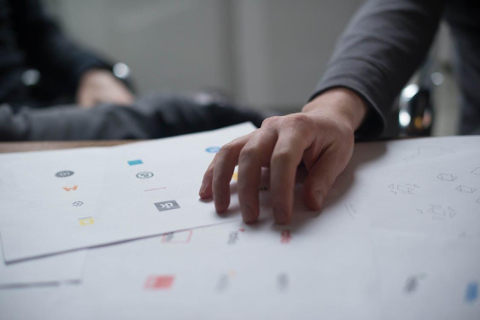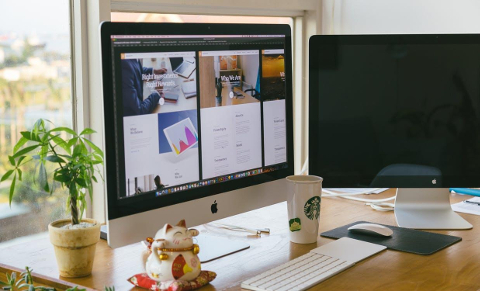
Lately, there has being a lot of talk about design briefs since they were first introduced at the Cannes Lions international festival for creativity in 2014. People still wonder if briefs are still relevant in the design space.
But then you may ask, what is a design brief? According to Wikipedia, a design brief is a document that allows you to identify the core details of your upcoming design project in terms of the scale and scope.
A design brief has the ability to become one of the most powerful tools at hand for a designer and will guide your workflow from the beginning to the end. Most companies have different ways of handling their briefs. To benefit the most, you would want to create the brief with your client present and on the site of the project. This will assist in setting the objectives and goals right from the beginning in front of your customer and all other important stakeholders. In the end, all parties can be responsible for the outcome.
Creating a brief helps avoid any unnecessary revisions later on as the client would have approved the vision rather than getting the “we did not ask for that” moments.
Making a brief has certain advantages such as:
- Provides insight for the effective creation of a visual design
- Offers your team a more detailed picture of what your client should expect
- Help’s keep external contributors on track
- Gives the client a sense of involvement in the project
Your design brief is still valuable even after you’re done with the project. It will act as a point of reference on other projects that you may want to do or as a case study.
The Anatomy

Depending on the project that you’re doing, the brief may come in a different shape and size. This, however, should not make you wonder if there is a specific way of writing or not. Here are the main parts that can be found in a design brief:
-
Company Profile
In the brief, make sure that you include your client’s company or business, an overview should give a brief description of their brand and any factors that may influence the overall direction of the project. The overview is to give your team a sense of familiarity of your client.
Here is what to include in the company profile:
- Company details such as name, products and the industry.
- The type of brand
- The mission and vision
- Direct and indirect competitors
- Key stakeholders and contributors
When working with big companies, it’s good to acknowledge who has the final approval of the project.
-
Project Overview

The project overview should provide a detailed description of the project. It should include as much context as possible. It should be able to answer the questions “what are you doing?” and “why are you doing it?” The answers to these questions can be found with the client. They should know the “what” and “why.”
Answering the “what” should be simple enough. The overview should include the scope and scale of the project. Whatever you are building, is it new or are you doing renovations to an already existing project? What are the deliverables’ and assets that the client should expect at the completion of the project?
The “why” can be a little challenging. For you to answer this, you must know the design challenges that the client is facing and might have necessitated the project.
-
Goal and Objectives

To most businesses, a website is just a way to showcase what their company really offers but to e-commerce entrepreneurs the website is their business. To make things more valuable, try to state what the project is trying to achieve. Goals are what you plan to achieve at the end of the project and objectives are how you plan to achieve the goals. Here are some examples of the goals with their corresponding objectives.
The client wants an increase in the number of visitors on the website.
- Increase the number of posts by x%
- Invite guest bloggers
The client wants an increase in revenue through the website:
- Increase monthly income by 30%
- Change the interface Advertise on more platforms
- Advertise on more platforms
By stating your objectives and goals, you are proving your value to your customer and also equipping yourself with the necessary tools to accomplish the project.
-
Target Audience
One of the key things to consider when developing your client’s product is to take into account the type of people your client plans to reach out to. The users will play a key role in making sure if the website is successful or not.
In most cases, the customer might be able to know who their target audience is and this will go a long way in helping you know what the project needs. If this is not the case, then what you can do is add user research as value added to the project. If this doesn’t work, you can sit down with them and try to figure out who is their ideal customer through figuring out the persona of the audience.
Your personas attributes should include demographics such as the gender and age, and a glimpse into their psychology in terms of what they consume on the media. Such information can help in outlining the user habits thus tailoring a project that can fit their needs.
-
Design Requirements

Including the design, requirements will ensure that your team has everything that it may need to accomplish the task at hand so as to meet the client’s expectations. The details will also help in making your brief appear whole so as to avoid coming back and redesigning everything once you get the specs. Such requirements can be:
- Dimensions and resolutions
- File formats
- Colors
- Images
In this section, you can also include some reference materials such as the brand details, mood-boards and anything else that could assist in the completion of the project.
-
Budget and Time Limit

In any project, you must know what you plan to spend and the amount of time that you are to take on that project. It’s like when you want to write and you don’t have the right tools to write your essays such as writing material and the time limit; you might end up writing forever. This is the cause and effect essay structure.
Knowing these aspects helps you plan wisely and assist in timely completion of the project.
Conclusion
That’s it from us. We hope you enjoyed this and you can use these guidelines in creating your design brief for any project that you may have.




